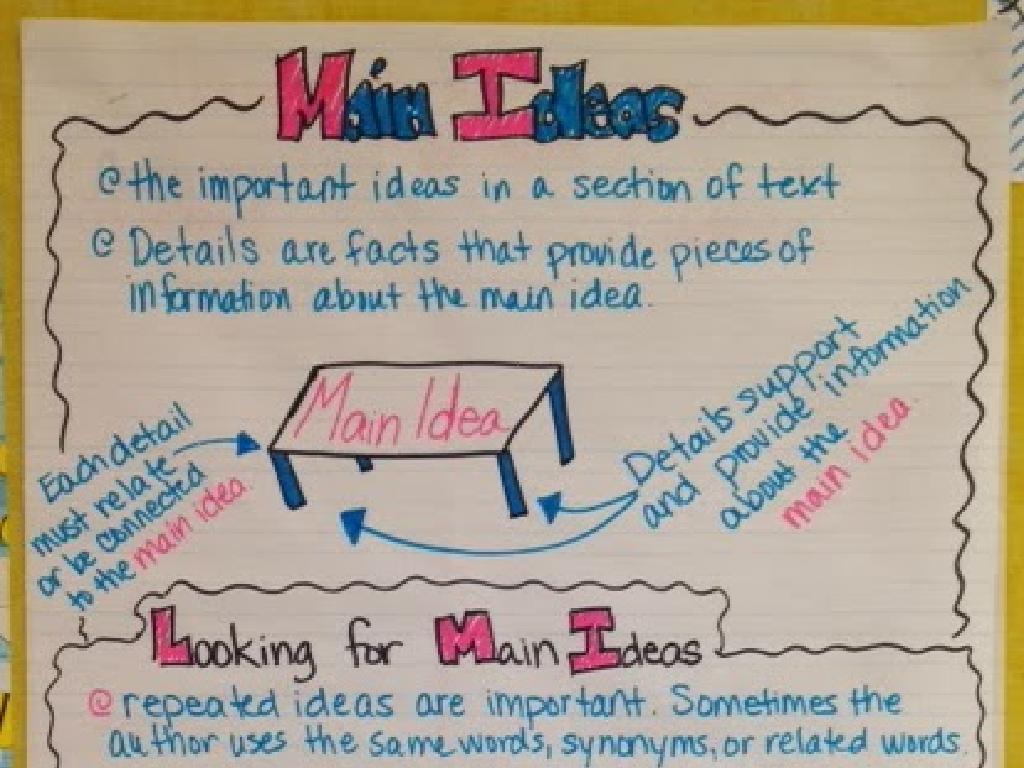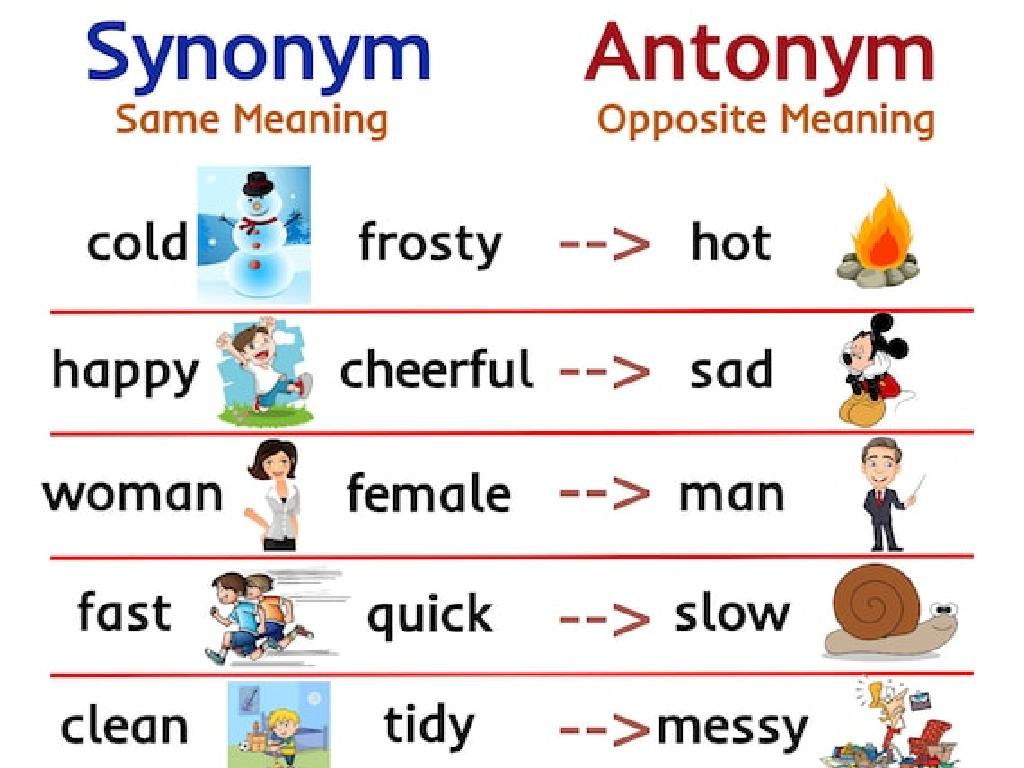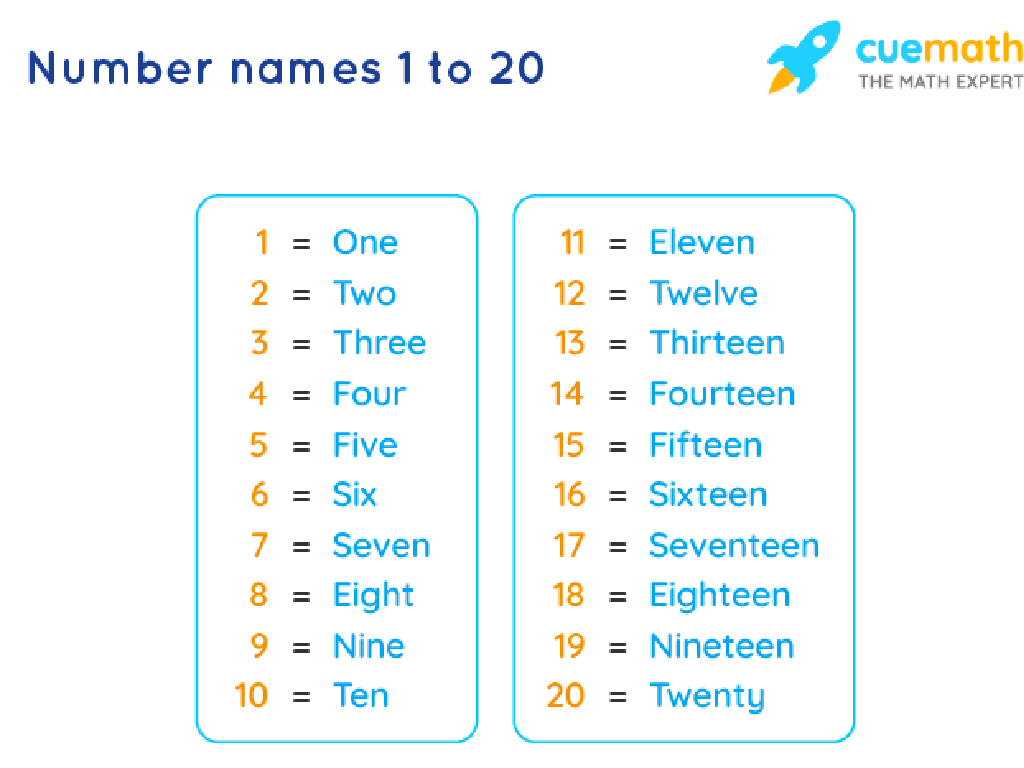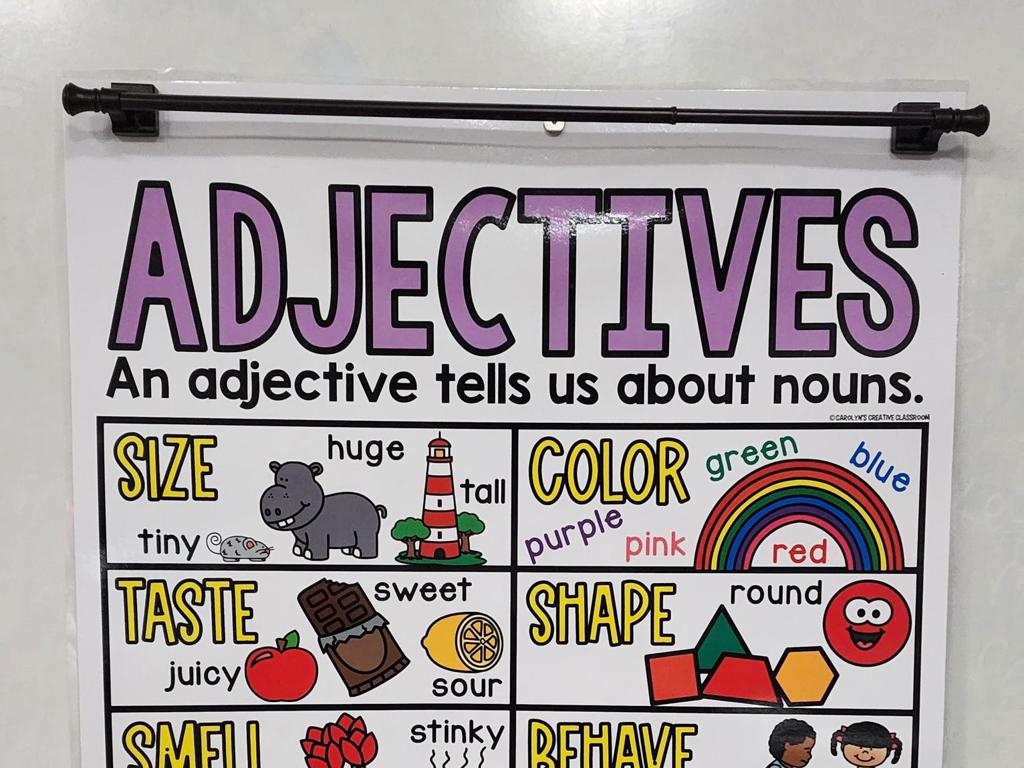Classify Figures Of Speech
Subject: Language arts
Grade: Sixth grade
Topic: Literary Devices
Please LOG IN to download the presentation. Access is available to registered users only.
View More Content
Exploring Figures of Speech
– What are Figures of Speech?
– Creative ways to use words for effect
– The Power of Language
– Language can influence and persuade
– Enhancing Writing with Figures
– Figures of speech make writing vivid
– Examples in Literature
– Metaphors, similes in famous books
|
This slide introduces the concept of figures of speech, which are creative expressions used to make language more impactful. Discuss how figures of speech, like metaphors and similes, can paint vivid pictures in the reader’s mind and evoke emotions. Explain that they are not meant to be taken literally but are used to express ideas in a more imaginative way. Provide examples from well-known literature to illustrate how these devices enhance storytelling and writing. Encourage students to think of their own examples and consider how different figures of speech can change the tone or mood of a sentence.
Exploring Figures of Speech
– Define figures of speech
– A figure of speech is a word or phrase used in a non-literal sense for rhetorical effect.
– Purpose in writing
– Writers use them to convey emotions, visualize ideas, and emphasize points.
– Literature and daily examples
– Metaphors in poetry or idioms in conversation like ‘break the ice’.
– Enhancing language expression
– They add color and interest to language, making it more engaging.
|
This slide introduces the concept of figures of speech, which are creative expressions used by writers and speakers to convey their messages more powerfully. It’s important for students to understand that figures of speech are not meant to be taken literally; instead, they serve to evoke imagination and convey deeper meanings. By providing examples from literature and everyday language, students can see the relevance and application of these expressions. Encourage students to think of figures of speech they’ve encountered in their reading or in conversations and discuss how these phrases add flavor to language.
Classifying Figures of Speech
– Understanding Similes
– A simile uses ‘like’ or ‘as’ to compare, e.g., ‘as brave as a lion’.
– Exploring Metaphors
– A metaphor makes a direct comparison, e.g., ‘time is a thief’.
– Discovering Personification
– Personification gives human qualities to objects, e.g., ‘The wind whispered’.
– Identifying Hyperboles
– Hyperbole is an extreme exaggeration, e.g., ‘I’m so hungry I could eat a horse’.
|
This slide introduces students to the different types of figures of speech, which are literary tools that make language expressive and vivid. Similes and metaphors are both used to draw comparisons, but similes use ‘like’ or ‘as’ while metaphors do not. Personification involves giving human characteristics to non-human entities, making descriptions more relatable. Hyperbole involves deliberate exaggeration to create a strong impression or add humor. Encourage students to create their own examples of each figure of speech to deepen their understanding and ability to identify them in literature.
Exploring Similes in Literature
– What is a simile?
– A simile compares two things using ‘like’ or ‘as’.
– Finding similes in text
– Look for ‘like’ or ‘as’ to spot similes in sentences.
– Crafting your similes
– Use your imagination to compare different things.
– Practice with similes
|
This slide delves into similes, a key figure of speech in literature. Begin by defining a simile as a comparison between two unlike things using the words ‘like’ or ‘as’. Encourage students to identify similes by looking for these keywords in sentences. Then, challenge them to create their own similes, drawing comparisons that might relate to their own experiences or surroundings. Provide examples to illustrate how similes add depth to writing. For practice, students can work in pairs to come up with similes and share them with the class, fostering a deeper understanding and appreciation for this literary device.
Exploring Metaphors
– What is a metaphor?
– A metaphor compares two things without using ‘like’ or ‘as’.
– Finding metaphors in text
– Look for direct comparisons in sentences.
– Crafting your own metaphors
– Use your imagination to make comparisons.
– Metaphors enhance writing
– They add depth and creativity to our expressions.
|
This slide delves into metaphors, a key figure of speech in literature. Begin by defining a metaphor as a direct comparison between two unrelated things, showing how one is the other. Unlike similes, metaphors do not use ‘like’ or ‘as’. Next, guide students on how to spot metaphors within sentences by looking for implied comparisons. Encourage students to create their own metaphors, using their creativity to draw connections between different concepts or objects. Emphasize how metaphors can make writing more vivid and engaging. Provide examples and exercises to help students practice identifying and creating metaphors. For instance, ‘the classroom was a zoo’ implies the noisy and chaotic nature of the room without stating it outright.
Exploring Personification
– What is personification?
– Giving human traits to non-human things
– Finding personification examples
– Look for objects or animals doing human actions
– Crafting your personifications
– Use your imagination to give life to objects
– Understanding its effect
– It makes descriptions more vivid and engaging
|
Personification is a figure of speech where human qualities are given to animals, objects, or ideas. It is a common literary device used to add depth and creativity to descriptions. When identifying personification, guide students to look for instances where an inanimate object is described as doing something only a human can do. Encourage them to create their own examples of personification by thinking about how they might describe an object if it were alive. Discuss how personification can make writing more interesting and help readers connect with the text. Have students share their examples and explain how their personification adds to the imagery of the sentence.
Exploring Hyperboles
– What is a hyperbole?
– An exaggerated statement not meant to be taken literally, e.g., ‘I’m so hungry I could eat a horse.’
– Spotting hyperboles in text
– Look for extreme exaggeration used for effect, not to deceive.
– Crafting your own hyperboles
– Use your imagination to exaggerate something for emphasis or humor.
– Hyperboles make writing exciting
|
This slide delves into hyperboles, a figure of speech used to create emphasis through deliberate and obvious exaggeration. Start by defining hyperbole and explaining that it’s not intended to be taken literally. Provide examples and ask students to identify hyperboles in sentences from familiar texts or songs. Then, encourage them to create their own hyperboles, perhaps related to their experiences or common sayings. Emphasize that hyperboles are a fun way to spice up writing and make it more engaging. The activity will help students understand the use of hyperbole in literature and how it can be employed effectively in their own writing.
Classifying Figures of Speech
– Exercise: Identify figures of speech
– Find metaphors, similes, personification in sentences
– Discuss: Message enhancement
– How does a metaphor deepen understanding?
– Group Activity: Classify story sentences
– Work together to find figures of speech in a book excerpt
– Reflect on the use of language
|
This slide is designed to engage students in a practical understanding of figures of speech. Start with an exercise where students identify different figures of speech in given sentences. Then, lead a discussion on how these literary devices enhance the message or feeling of a sentence. For the group activity, provide students with sentences from a story and ask them to classify the figures of speech they find. Encourage them to reflect on how these elements affect their interpretation of the text. This activity will help students appreciate the richness of language and improve their analytical reading skills. Provide examples like ‘The classroom was a zoo’ (metaphor) to illustrate the point and guide the discussion.
Let’s Practice: Classifying Figures of Speech
– Pair up and find figures of speech
– Analyze poems for literary devices
– Look for metaphors, similes, personification, etc.
– Classify each figure of speech
– Determine if it’s comparison, exaggeration, etc.
– Share discoveries with the class
|
This class activity is designed to reinforce the lesson on figures of speech. Students will work in pairs to foster collaboration and peer learning. Provide a selection of poems and instruct the pairs to identify and classify the different figures of speech they find, such as metaphors, similes, or personification. Encourage them to discuss why the poet might have chosen to use these devices. After the activity, each pair will share their findings with the class, allowing students to learn from each other’s insights. For the teacher: Prepare a list of poems that contain clear examples of figures of speech. Consider having a worksheet where students can note down their findings. Have a few examples ready to share in case some pairs struggle to find figures of speech in their assigned poems.
Homework: Crafting Stories with Figures of Speech
– Write a short story for homework
– Include 3 different figures of speech
– Simile, metaphor, personification, etc.
– Reflect on the choice of each figure
– Why did you use a simile or a metaphor? How does it enhance your story?
– Share your story in the next class
|
This homework assignment encourages students to actively use figures of speech in their writing, enhancing their understanding of literary devices. By incorporating at least three different figures of speech such as similes, metaphors, or personification, students will learn how these elements can add depth and creativity to their stories. They should also reflect on their choices, understanding why a particular figure of speech was effective and how it contributed to their narrative. In the next class, students will have the opportunity to share their stories, providing a platform for discussion on the use of language and the impact of literary devices on storytelling. This exercise will not only improve their writing skills but also their critical thinking and ability to analyze literary elements.
Wrapping Up: Figures of Speech
– Recap of figures of speech
– Their role in enriching writing
– They add color and interest to writing, making it more engaging.
– Open floor for questions
– Encourage exploration at home
– Try to find figures of speech in your favorite book or song!
|
As we conclude today’s lesson, it’s important to review the figures of speech we’ve covered and understand their significance in literature and daily communication. Figures of speech enhance the reading experience by adding flavor and depth to the text, making it more vivid and enjoyable. Encourage students to ask any lingering questions they might have to ensure clarity. Finally, inspire them to continue learning by identifying figures of speech in the books they read or the music they listen to at home. This will help solidify their understanding and appreciation of literary devices.






